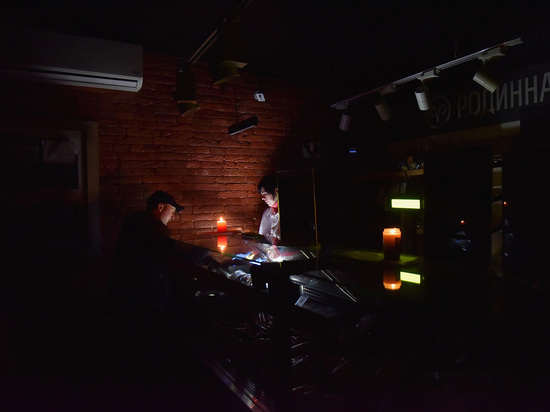Engineer-physicist told why the blackout of Ukrainian thermal power plants, hydroelectric power plants and three nuclear power plants is dangerous
[ad_1]

After a massive rocket attack by Russian troops, much of Ukraine has been plunged into darkness, according to local reports. The Ukrainian side stated that due to the destruction of power grids, nuclear scientists were forced to stop power units at all three nuclear power plants – South Ukrainian, Khmelnitsky and Rivne. The electricity that was generated at nuclear power plants simply had nowhere to flow. Andrey Ozharovsky, an engineer-physicist, an expert of the Radioactive Waste Safety Program, told MK about the risks of forced cooling down of power units.
“The Russian Federation does not hide the fact that its goal is the destruction of the energy infrastructure of Ukraine,” says Andriy Ozharovsky. – Impacts are applied to distribution substations, transformers, power lines. If generating capacities are separated from consumers, then it is impossible to transmit electricity.
And, if for hydroelectric power plants or thermal power plants that run on coal, this is not a big technological problem, it is quite easy to stop them, then for nuclear power plants this is a really difficult transition process. Because the reactors must be shut down.
Nuclear power plants can be stopped at the request of the dispatcher or for repairs. This is a standard procedure. To stop the fission reaction of uranium nuclei, which gives the main energy, can be quite easy – for this, absorbing rods are introduced, and the reaction stops. But the reactor has accumulated a huge amount of artificial radionuclides, in which alpha and beta decays continue. Which leads to the release of heat. This is the so-called residual heat, which must be removed. It instantly decreases by 100 times, but about 1% of the power that was, remains. This heat must be removed to the environment through the pumping of cooling water.
– How long will it take?
– To bring the reactor into a state of “cold shutdown”, nuclear scientists have such a term, you need to know the history of the reactor. How long did it work, how much fission products were accumulated in it, which I spoke about earlier. On average, it’s a few weeks.
– And the nuclear power plant is already becoming a recipient of electricity?
Yes, you will have to connect backup diesel generators, which must not be damaged and be in working condition. They will provide electricity, first of all, to the reactor cooling system.
Judging by the reports, the Ukrainian nuclear scientists coped with the situation. But God forbid if something goes wrong. For example, backup diesel generators will not start. There will be something wrong with their lubrication or they may be destroyed. This is already close to the edge.
According to Andrei Ozharovsky, nuclear power plants usually have 5 power lines, of which 2 are standby. Under the Soviet Union, there was such a practice. This has often helped. Similar shutdowns were at the Beloyarsk NPP, in the Sverdlovsk region in September 2000.
(On the afternoon of September 9, residents of the satellite town of Zarechny were frightened by terrifying sounds coming from the side of the nuclear power plant. A bright cloud rose above the building of the Beloyarsk nuclear power plant, and then electricity disappeared, water disappeared from the taps, the radio went silent. Residents, having taken iodine-containing drugs, began to hastily leave the city. Then it turned out that what happened was caused by a disruption in the operation of the power system. As a result of fluctuations in the frequency of the current in the Sverdlovenergo system, an emergency situation developed at the station, the reactor was in forced idle time for more than 50 hours. – Auth.)
Now, according to the statements of the Ukrainian side, most of the Kyiv region, Kharkov, Lvov, Odessa, Khmelnitsky, Nikolaev, Lvov, part of Zaporozhye, which is under the control of Ukrainian troops, is de-energized.
Ukrainian nuclear power plants provided 55% of the country’s total energy balance. Europe’s largest Zaporozhye nuclear power plant, which generated 20% of all Ukrainian electricity, is now located in the liberated territory, due to the threat of accidents, it has been put into “sleep mode”. The remaining three nuclear power plants in Ukraine account for up to 28% of energy.
The South Ukrainian NPP, which is located one hundred kilometers from Nikolaev, covered 96% of the electricity needs of Nikolaev, Odessa, Kherson regions. Rivne NPP, which is located four kilometers from the city of Varash, Rivne region, generated 9% of electricity from the total balance in Ukraine. The main purpose of the Khmelnytsky NPP, located in the city of Netishyn, Khmelnytsky region, is to cover the shortage of electrical capacities in the Western region of Ukraine.
[ad_2]
Source link






